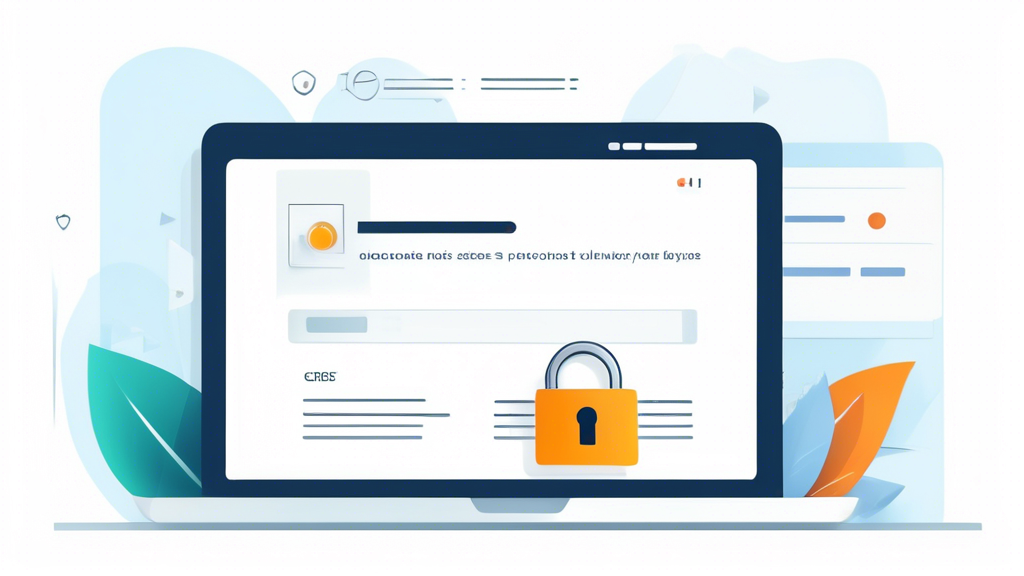Introduction
In the digital age, where online activities pervade almost every aspect of daily life, safeguarding user data has become paramount. Crafting an effective sample online privacy policy is essential for any website that collects personal information from its users. Not only does an online privacy policy build trust and transparency with your audience, but it also ensures compliance with legal standards globally. This comprehensive guide will walk you through the necessity, fundamental components, and best practices for creating a robust sample online privacy policy for your business.
Why Every Website Needs an Online Privacy Policy
Importance and Legal Necessities of a Sample Online Privacy Policy
In today’s digital age, the concept of privacy has taken on new dimensions, especially with the increasing amount of personal data shared online. The rise of data privacy concerns among internet users underscores the critical need for every website to have a comprehensive privacy policy. But why is it so important, and what legal necessities must website owners be aware of? This section delves into the significance and legal implications of having an online privacy policy.
As internet users become more aware of the potential misuse of their personal information, they are increasingly selective about the websites they engage with. Trust and transparency have become paramount. A well-crafted sample online privacy policy serves as a vital tool for building this trust. It communicates to visitors that their privacy is taken seriously and informs them about how their data will be handled.
Globally, stringent privacy laws enforce the need for websites to have clear and concise privacy policies. Regulations such as the General Data Protection Regulation (GDPR) in European Union countries and the California Consumer Privacy Act (CCPA) in the United States set high standards for how data should be collected, stored, and used. This means that regardless of where your business is based, if you interact with users from these regions, compliance with these laws is a must.
The GDPR, which came into effect in May 2018, revolutionized data protection laws globally. It mandates that websites obtain explicit consent from users before collecting their personal data and grants users the right to access, rectify, or delete their information. Additionally, organizations must report any data breaches within 72 hours. Non-compliance can result in hefty fines, making it imperative for businesses to have a GDPR-compliant privacy policy.
Similarly, the CCPA, effective from January 2020, gives California residents the right to know what personal data is being collected, to whom it is sold, and the ability to opt out of the sale of their data. Businesses must provide a clear privacy policy outlining these rights. Failure to comply can result in substantial penalties, emphasizing the necessity for a CCPA-compliant privacy policy.
The risks of not having an online privacy policy extend beyond legal repercussions. Businesses may face significant financial fines and severe reputational damage. In a market where consumers are increasingly prioritizing data privacy, a lack of transparency can lead to a loss of customer trust and loyalty. Furthermore, an oversight in maintaining an up-to-date privacy policy can expose businesses to potential data breaches, resulting in costly legal battles and settlements.
An online privacy policy is not just a legal obligation but a reflection of a business’s commitment to safeguarding user data. It acts as a blueprint, detailing how a website collects, uses, stores, and protects user information. By offering clarity and assurance, a well-structured sample online privacy policy can enhance user experience and foster a loyal customer base.
In conclusion, the importance of an online privacy policy cannot be overstated. As data privacy concerns continue to grow and legal regulations become stricter, having a comprehensive privacy policy is essential for any website. It not only ensures compliance with global privacy laws but also builds trust and credibility with users. Businesses must prioritize the creation and regular updating of their privacy policies to protect themselves and their customers in the digital landscape.
Essential Components of a Sample Online Privacy Policy
Key Elements to Include in Your Sample Online Privacy Policy
Creating a robust and comprehensive sample online privacy policy is not only about legal compliance but also about fostering trust with your users. A well-drafted privacy policy assures users that their data is safeguarded and that they have control over their personal information. Here are the key elements that you should include in your sample online privacy policy:
Types of Information Collected: Personal and Non-Personal
The cornerstone of any effective sample online privacy policy is a clear description of the types of information your website collects. This includes personal information that can identify an individual, such as names, email addresses, phone numbers, and payment details. Non-personal information, which is data that cannot be used to identify an individual, might include browser types, device information, or website usage statistics.
Clearly categorizing and detailing these types of data helps to set user expectations and provides transparency about what information is being gathered.
How the Information Is Used and Shared
Users are highly concerned about how their information is utilized and shared. Your sample online privacy policy should outline the various ways in which collected data is employed. This might include using personal information to process orders, improve customer service, personalize user experience, send periodic emails, or for marketing purposes.
Additionally, it’s imperative to clarify whether and how information is shared with third parties. For example, state if data is shared with service providers who assist in operating your website or if it is shared for advertising purposes. Make sure to emphasize any conditions under which user data could be disclosed, such as legal requirements or protecting the rights and safety of others.
User Rights and Choices Regarding Their Data
An effective sample online privacy policy should clearly inform users of their rights concerning their personal data. This includes the right to access, correct, delete, or object to the processing of their information. Detail the processes users can follow to exercise their rights, such as contacting customer support or using data management tools provided on your website.
Moreover, users should be made aware of their choices regarding data collection and usage, such as opting out of marketing emails, adjusting browser settings to limit tracking, or managing cookies and ad preferences. Offering these options not only enhances user trust but also ensures compliance with various data protection regulations like GDPR and CCPA.
Data Protection and Security Measures
Data security is a critical concern for users and regulatory bodies alike. Your sample online privacy policy should articulate the measures you take to safeguard user data. This could include descriptions of encryption methods, secure servers, access controls, and other technical, administrative, or physical safeguards designed to protect personal information from unauthorized access, alteration, disclosure, or destruction.
Ensure to convey your commitment to regular security audits, monitoring for vulnerabilities, and updating security practices as technologies evolve. This transparency not only complies with legal requirements but also provides users with confidence in your data protection practices.
Including these essential components in your sample online privacy policy not only helps ensure compliance with global privacy laws but also builds a foundation of trust with current and potential users. Crafting a clear, comprehensive, and user-friendly privacy policy is a vital step in responsible data management and user engagement.
Best Practices for Creating an Effective Sample Online Privacy Policy
Tips and Recommendations for Drafting a Clear and Compliant Sample Online Privacy Policy
Creating an effective sample online privacy policy is more than just a legal necessity; it’s an essential aspect of building trust with your users. A well-drafted privacy policy can help reassure users that their personal data is handled responsibly, thereby fostering a sense of security and loyalty. Here are some best practices for crafting a privacy policy that is both clear and compliant:
Steps for Drafting an Easy-to-Understand Privacy Policy
An accessible privacy policy should be written in plain language, avoiding legal jargon that might confuse the average user. Here’s how you can achieve this:
- Use Simple Language: Avoiding complex legal terms will make your policy more user-friendly. Use straightforward language to explain how data is collected and used.
- Be Transparent: Clearly state what type of data is collected, why it’s collected, and how it will be used. Transparency helps in gaining users’ trust.
- Organize Content Logically: Structure your privacy policy in a logical manner with headings and subheadings. This will help users quickly find the information they are looking for.
- Include Clear Definitions: Provide definitions for any terms that might not be familiar to all users. For instance, explain what personal data and cookies are.
How to Tailor Your Privacy Policy to Fit Your Business
Every business is unique, and your privacy policy should reflect that. Tailoring your policy to fit the specific needs and practices of your business can enhance its effectiveness. Consider the following tips:
- Understand Your Data Collection Practices: Analyze what types of data your business collects and why. Ensure that your privacy policy addresses these specific practices.
- Match Your Policy to Your Services: If your services involve special categories of data (e.g., health information or children’s data), make sure your privacy policy covers these in detail.
- Consider Your User Base: Think about your audience and their concerns. Customize your privacy policy to address potential questions or issues that might be relevant to your users.
Periodic Review and Updating of the Privacy Policy
Your sample online privacy policy should not be static. As your business practices evolve and new regulations emerge, your privacy policy should be reviewed and updated regularly:
- Regular Audits: Conduct regular audits of your data collection and processing practices to ensure they are accurately reflected in your privacy policy.
- Stay Informed About Regulations: Stay up-to-date with changes in data protection laws such as the GDPR, CCPA, and other relevant regulations. Make necessary updates to ensure compliance.
- Notify Users of Changes: When significant changes are made to your privacy policy, notify your users. Transparency about updates can help maintain trust.
- Version Control: Keep a version history of your privacy policy. This helps in tracking changes over time and provides clarity for your users and legal purposes.
Examples of Well-Crafted Sample Online Privacy Policies for Reference
Looking at well-crafted privacy policies from other reputable organizations can provide valuable insights into how to structure and phrase your own policy. Some exemplary policies include:
- Google: Google’s privacy policy is known for its simplicity and clarity. It effectively uses plain language to explain complex data practices.
- Facebook: Facebook’s privacy policy includes a well-structured layout with clear sections, making it easy for users to navigate and understand.
- Apple: Apple emphasizes user control in its privacy policy, highlighting how users can manage their own data on Apple platforms.
By following these best practices, you can create a sample online privacy policy that not only complies with legal requirements but also enhances user trust and confidence. Remember, the goal is to be transparent, clear, and user-centric in your approach to data privacy.
Conclusion: More Than Just Legal Compliance
Crafting a comprehensive sample online privacy policy is more than just a legal necessity; it is a fundamental component of building trust with your users. By transparently communicating how user data is collected, utilized, and protected, you not only comply with laws such as GDPR and CCPA but also foster a sense of security among your user base.
Remember that an effective privacy policy should be detailed yet easy to understand, regularly updated, and tailored to your specific business needs. Including all essential components such as the types of information collected, usage practices, user rights, and security measures will ensure that your policy meets both user expectations and regulatory requirements.
In addition to fulfilling legal obligations, a well-crafted sample online privacy policy can serve as a differentiator in a competitive market where data privacy concerns are paramount. By adhering to best practices and taking a user-centric approach, you will not only avoid the risks associated with non-compliance but also enhance your brand’s reputation.
Ultimately, a transparent and thorough online privacy policy reassures your users that their data is in safe hands, paving the way for stronger customer relationships and long-term business success.









